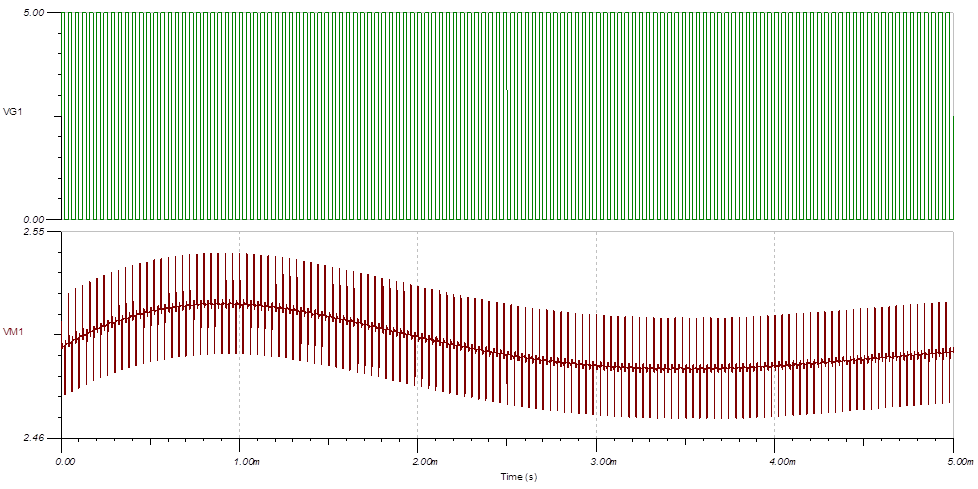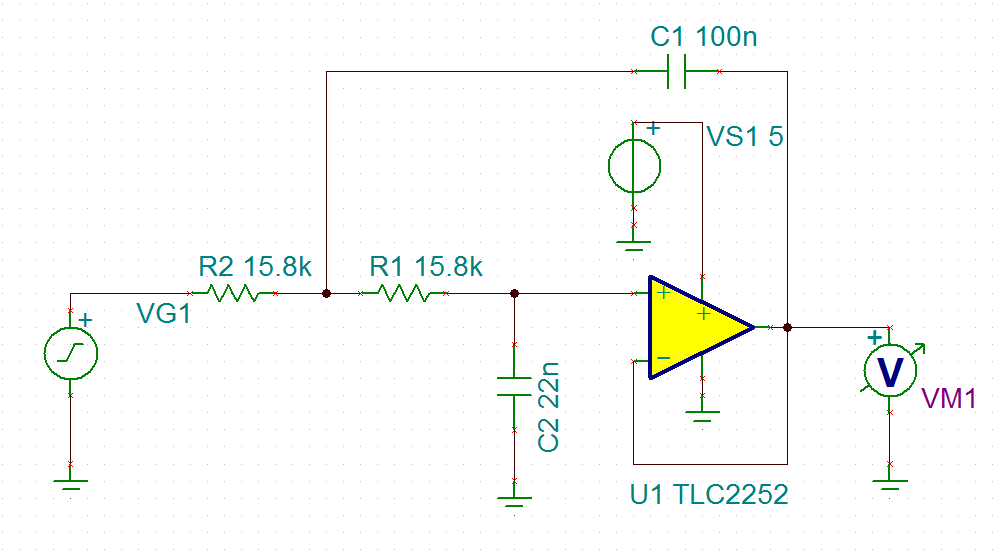Other Parts Discussed in Thread: OPA320
Hello Team,
I am currently evaluating the TLC2252, and ran into some noise issues on the output.
To provide a little background on the design, the op amp will be used as a Sallen Key Low Pass Filter, with an input signal that is a 25kHz square wave that goes from 0V to 5V. Also, the TLC has a single 5V supply. Below is the setup of the LPF:
When R1, and R2 are set to 15.8kΩ, the cutoff frequency is around 215Hz and the output is centered at 2.5V as expected. (Simulation shown below)
When R1, and R2 are set to 3.4kΩ, the cutoff frequency is around 1kHz and the output is generating a significant amount of noise as seen in the output below.
After reviewing the datasheet I am not sure what is causing the noise levels to increase when the cutoff is changed to 1kHz. It looks like we are operating within the common mode range, and I can't seem to identify where we went wrong here. Any ideas as to when could be causing this?
Best Regards,
Javier Palomo




